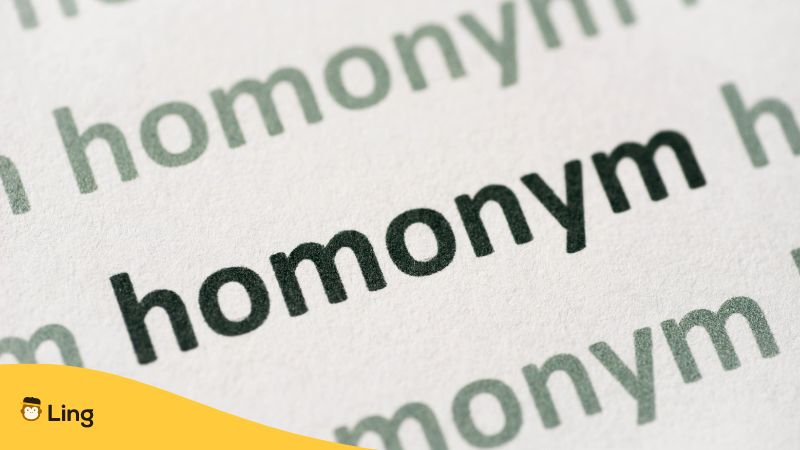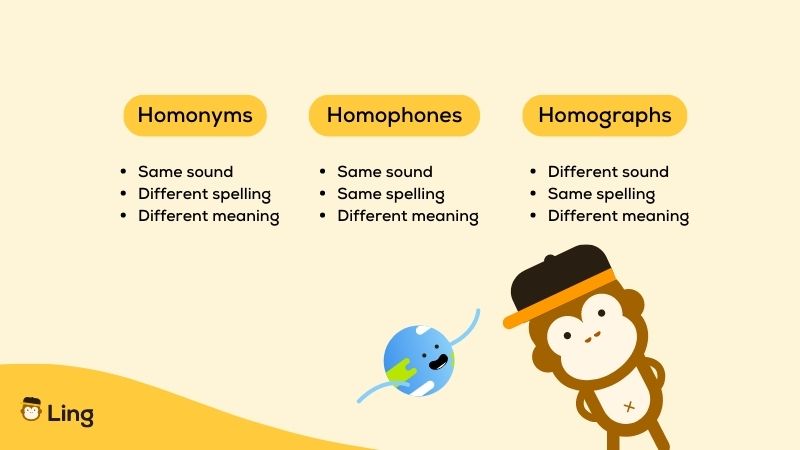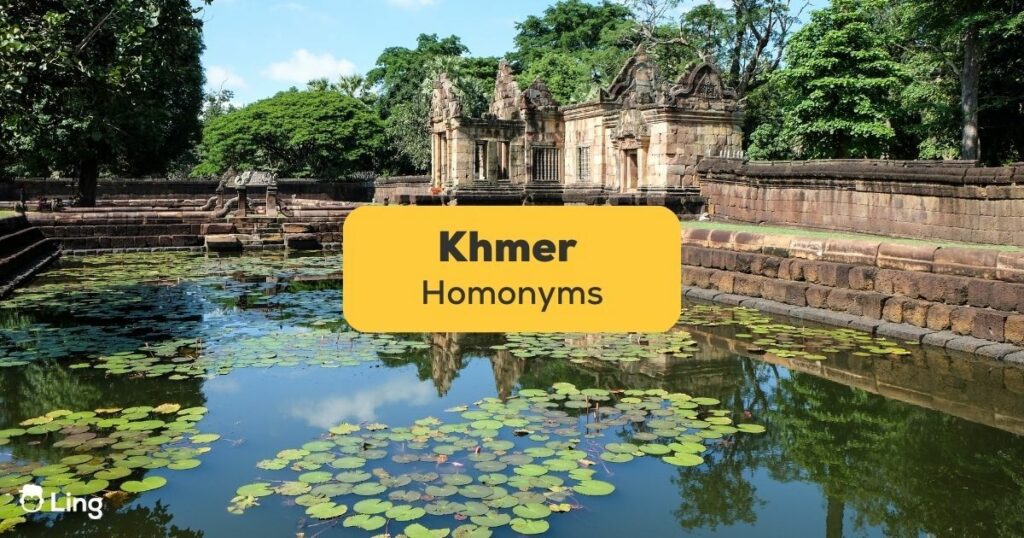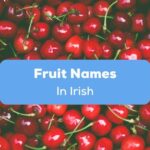Have you ever heard words that sound the same but mean different things? They don’t only exist in English. Homonyms can be difficult for any language learner to master. You need to have a good knowledge of Khmer pronunciation and tones besides a solid vocabulary to be able to differentiate Khmer homonyms. But no worries! In this article, you will learn the commonly used homonyms and how they work in Khmer.
But before we get started, I need to make sure you know what homonyms are and how they differ from homophones and homographs in general.
Understanding Homonyms
Have you ever heard the words “homonyms,” “homophones,” and “homographs” and wondered what they mean? Well, don’t worry! I’m here to explain it to you in the simplest way possible.

What Are Homonyms?
Homonyms are words that sound the same and spelled the same but have different meanings. It’s like a little language puzzle! These words might seem like twins, but they have their own special meanings. For example:
- can (v) – can (n)
- ring (v) – ring (n)
- tire (v) – tire (n)
What About Homophones?
Homophones are words that sound the same but have different spellings and different meanings. Imagine two friends named “two” and “to.” Even though they sound the same, their spelling is different. “Two” is a number, and “to” is used when you’re going somewhere. Some other examples:
- know (v) – no (n)
- eight (n) – ate (v)
- poor (n) – pour (v)
And Homographs?
Homographs are words that have the same spelling but different sounds and different meanings. Think about a “bow” you tie in your hair and a “bow” you use for shooting arrows. Even though they’re spelled the same, they’re not the same thing at all! Here are a few examples:
- bass (v) – bass (n)
- bow (v) – bow (n)
- tear (v) – tear (n)

Realized a pattern here? Usually, the word form of a homophone, homonym, or homograph is different. While one word is a noun the other word is a verb. That’s a quick tip to differentiate these words from each other.
Introduction To Khmer Homonyms
Imagine you have two special keys that look exactly the same, but they open different treasure chests. That’s what homonyms are like in the Khmer language! They are words that sound the same but have different meanings. However, remember that Khmer homonyms can be tricky too, just like in English!
In Khmer, even the tone can change the meaning of a word. When you say a Khmer word with a different tone, it can mean something totally different! For example, if you say “ba” with a high tone it means “father,” however, if you say it with a low tone it means “to play.”
Or let’s take the word “ម្ចាស់”. Depending on how you say it, it can mean “sleep” or “fish.” So, if someone is talking about bedtime and uses the word “ម្ចាស់” in the sentence, they probably mean “sleep.” However, if they’re talking about yummy seafood, then they mean “fish!”
Keep in mind that Khmer homonyms can change their meaning with a simple twist of tone or a hint from the words around them.
How To Understand Which Meaning Is Meant?
Sometimes, it can be difficult for non-native speakers to grasp which meaning of a homonym is used in the sentence. In that case, you can analyze the context to understand the meaning of Khmer homonyms.
But what is context? Context is all the words within the same sentence that help us understand a word’s meaning. So, for example, if someone says “I am going to the vet.” you’d know they mean the pet’s clinic, not “the clothe vet” thanks to the other words used in the sentence.
Let’s Learn Common Homonyms In Khmer Language!
Okay, let’s explore some more Khmer homonyms together. Here are fifteen pairs of words that sound the same but mean different things.
| Khmer Homonym Word | Khmer Pronunciations | English Translations |
|---|---|---|
| ប្រុស | Prŏh / Rŭy | Man / Rice |
| ការ | Ka / Kaa | Work / Disease |
| ម្ចាស់ | Mcchas / Chas | Sleep / Fish |
| ជើង | Chhoŭng / Chhoŭng | Neck / Hair |
| ដេរ | Dei / Dei | Duck / Oil |
| សួរ | Suŏr / Suŏr | Meet / Ask |
| គេង | Koeŭng / Koeŭng | Pond / To urinate |
| គេងការ | Koeŭng Ka / Koeŭng Ka | Canal / Job |
| លាន | Lăăn / Lăăn | Million / Step |
| កំបិទ | Kŏmbut / Kŏmbut | Close / Open |
| ទៀង | Tieng / Tieng | Grandmother / You |
| ស្លាប់ | Slap / Slap | Wet / Taste |
| តែ | Tae / Tae | Only / To hit |
| អ្នក | Neak / Neak | Person / You |
| បាន | Baan / Baan | Already / To get |
FAQs About Khmer Homonyms
1. Are homonyms only in Khmer?
No, homonyms play their magic tricks in many languages around the world, like English and Spanish too!
2. Can a Khmer word have more than two meanings?
Yes, some Khmer words are extra tricky and can have even more than two meanings. It’s like a word with many costumes!
3. How do Khmer speakers learn which meaning to use?
Khmer speakers are like word wizards! They use their magic senses for tone and the surrounding words to pick the right meaning.
4. Can I use homonyms to tell funny stories like a comedian?
Yes, exactly! Homonyms are like secret joke ingredients that make people laugh and think at the same time!
Isn’t it amazing how words in Khmer can be like magic spells, changing their meaning with a sprinkle of tone and a dash of context? So, the next time you hear a Khmer word that sounds like a riddle, remember – it’s like a secret language only clever explorers can understand!
Start Learning Khmer With Ling!
Ling is a language learning app designed to help you improve all four language skills in more than 60+ foreign language including the Khmer language.
Ling takes you from the beginning and guides you through step-by-step instructions to teach you how to write Khmer script correctly. The best part? With this, you can learn real-life vocabulary and phrases in Khmer and 60+ other languages! So what are you waiting for? Download the Ling app from the App Store or Google Play now!
Enjoyed this post? Ling has a massive Khmer language blog where you can find a lot of articles covering different aspects of the Khmer language and its culture!



































































